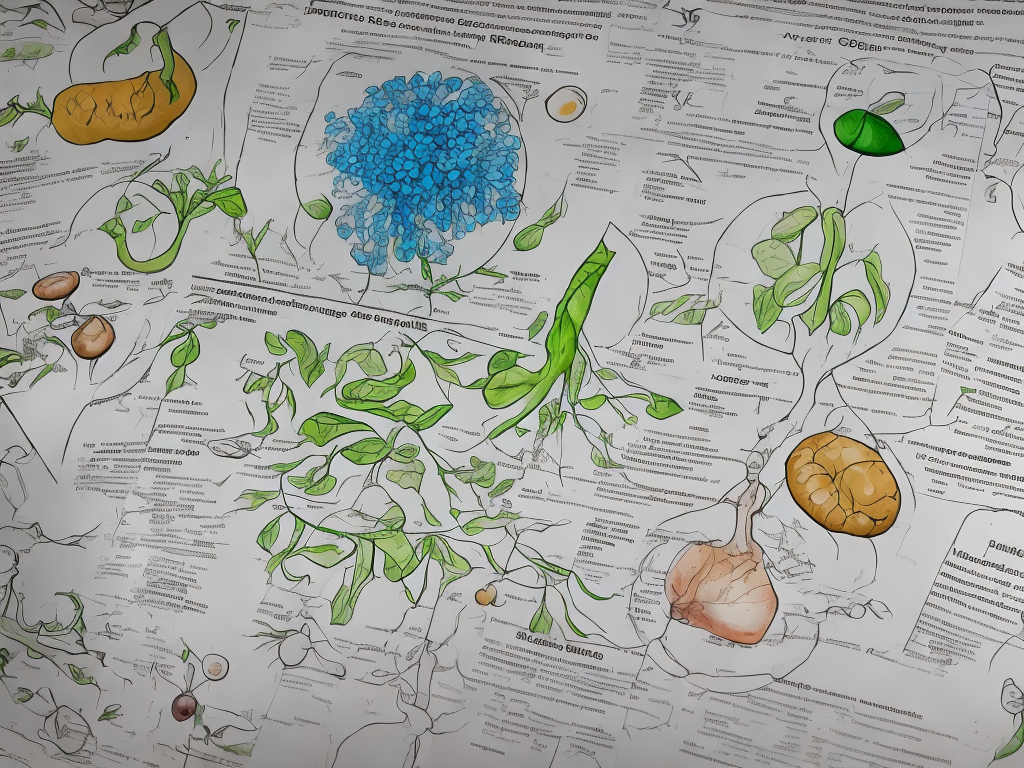
Difference Between Aerobic Respiration And Anaerobic Respiration
Respiration is the metabolic process that occurs in living cells to convert nutrients into usable energy. It is a vital process for all living organisms as it provides the necessary energy to carry out various cellular activities. Respiration can occur in two different ways: aerobic respiration and anaerobic respiration. While both types of respiration serve the purpose of generating energy, they differ in the presence or absence of oxygen and the efficiency of energy production. In this article, we will explore the differences between aerobic respiration and anaerobic respiration.
Aerobic respiration is the process by which living cells convert nutrients into energy in the presence of oxygen. This process occurs in the mitochondria, the powerhouse of the cell. It is a highly efficient process that produces a large amount of ATP (adenosine triphosphate), the energy currency of the cell. The overall equation for aerobic respiration is as follows: glucose + oxygen → carbon dioxide + water + energy (ATP). The breakdown of glucose occurs in several stages: glycolysis, the Krebs cycle, and oxidative phosphorylation.
During glycolysis, glucose is broken down into two molecules of pyruvate. This process occurs in the cytoplasm and does not require oxygen. It produces a small amount of ATP and NADH (nicotinamide adenine dinucleotide). The pyruvate then enters the mitochondria, where the remaining stages of aerobic respiration take place.
The Krebs cycle, also known as the citric acid cycle or tricarboxylic acid cycle, occurs in the mitochondrial matrix. In this cycle, the pyruvate undergoes a series of enzyme-catalyzed reactions, resulting in the release of carbon dioxide and the production of ATP, NADH, and FADH2 (flavin adenine dinucleotide).
Finally, oxidative phosphorylation takes place in the inner mitochondrial membrane. This stage relies on the electron transport chain, which consists of a series of protein complexes. The electrons from NADH and FADH2 are transferred through these complexes, releasing energy that is used to pump protons (H+) across the inner mitochondrial membrane. This creates a proton gradient, which drives the synthesis of ATP through ATP synthase. In the end, oxygen serves as the final electron acceptor, combining with the electrons and protons to form water.
Anaerobic respiration, on the other hand, is a process that occurs in the absence of oxygen. It is less efficient compared to aerobic respiration, as it yields a smaller amount of ATP. Anaerobic respiration occurs in various organisms, including bacteria, yeast, and certain human cells. There are two main types of anaerobic respiration: alcoholic fermentation and lactic acid fermentation.
Alcoholic fermentation occurs in yeast and some bacteria. The breakdown of glucose follows a similar process as glycolysis in aerobic respiration. However, instead of entering the Krebs cycle and oxidative phosphorylation, the pyruvate is converted into ethanol and carbon dioxide. This process regenerates NAD+ (nicotinamide adenine dinucleotide), allowing glycolysis to continue and produce a small amount of ATP.
Lactic acid fermentation, on the other hand, occurs in certain bacteria and human muscle cells during strenuous exercise. Like glycolysis, the breakdown of glucose produces two molecules of pyruvate. Instead of entering the Krebs cycle, the pyruvate is converted into lactic acid. This process also regenerates NAD+, allowing glycolysis to continue.
One key difference between aerobic respiration and anaerobic respiration is the energy yield. Aerobic respiration produces a large amount of ATP, with approximately 36-38 molecules of ATP per glucose molecule. This high energy yield is due to the complete breakdown of glucose in the presence of oxygen.
On the other hand, anaerobic respiration produces a much smaller amount of ATP. Alcoholic fermentation produces a net gain of 2 molecules of ATP per glucose molecule, while lactic acid fermentation produces a net gain of 2 molecules of ATP. This lower energy yield is a consequence of the incomplete breakdown of glucose.
Another difference between aerobic and anaerobic respiration is the end products. In aerobic respiration, the end products are carbon dioxide and water, which are easily eliminated from the body. This process is crucial for organisms that rely on oxygen as their final electron acceptor.
In anaerobic respiration, the end products vary depending on the type of fermentation. Alcoholic fermentation produces ethanol and carbon dioxide, while lactic acid fermentation produces lactic acid. These end products can have different effects on the organism. For example, lactic acid can lead to muscle soreness and fatigue during intense exercise.
In conclusion, aerobic respiration and anaerobic respiration are two different processes by which living cells generate energy. Aerobic respiration occurs in the presence of oxygen and is a highly efficient process that produces a large amount of ATP. On the other hand, anaerobic respiration occurs in the absence of oxygen and is a less efficient process that yields a smaller amount of ATP. Understanding these differences is crucial in understanding the metabolic capabilities of different organisms and the effects of different types of exercise on the body.
 Self-Instruct
Self-Instruct